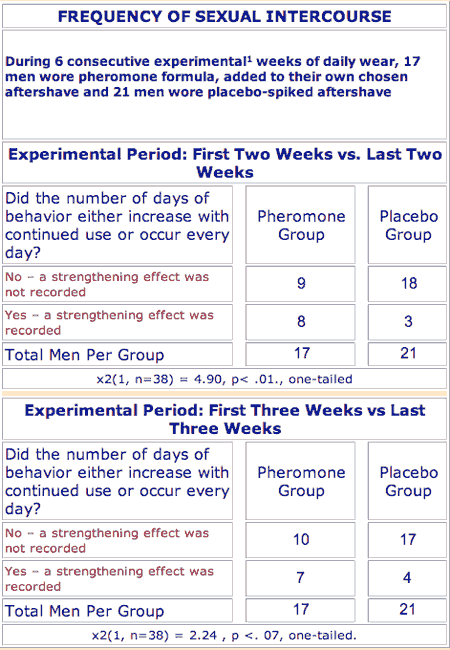Evidence that Sex Attractant Pheromone Effects Strengthen with Continued Use
OCTOBER 2005
Poster presentation by Dr. Winnifred Cutler at ASRM Annual Meeting

Authors:
Millicent Zacher, DO , Thomas Jefferson University, Philadelphia, PA,
Elizabeth Genovese, M.D., University of Pennsylvania School of Medicine, Philadelphia, PA
OCTOBER 2005. The American Society for Reproductive Medicine held a conjoint annual meeting with the Canadian Fertility and Andrology Society called "Reproductive Medicine 2005: Expanding the Borders and Meeting New Challenges"
October 16 - 19, 2005, Palais de Congres, Montreal, Quebec, Canada
ASRM is a national and international medical society and the recognized leader for multidisciplinary information in the field of reproductive medicine. ASRM members reside in all 50 of the United States and in over 100 other countries. Members include obstetrician/gynecologists, urologists, reproductive endocrinologists, embryologists, mental health professionals, internists, nurses, practice administrators, laboratory technicians, pediatricians, research scientists, and veterinarians
" My research has consistently focused on what behavior a woman can engage in to increase her power, well-being, and vitality."
---Winnifred B. Cutler, Ph.D.
A portion of the profits from our book and pheromone sales helps to fund Athena's on-going research.

